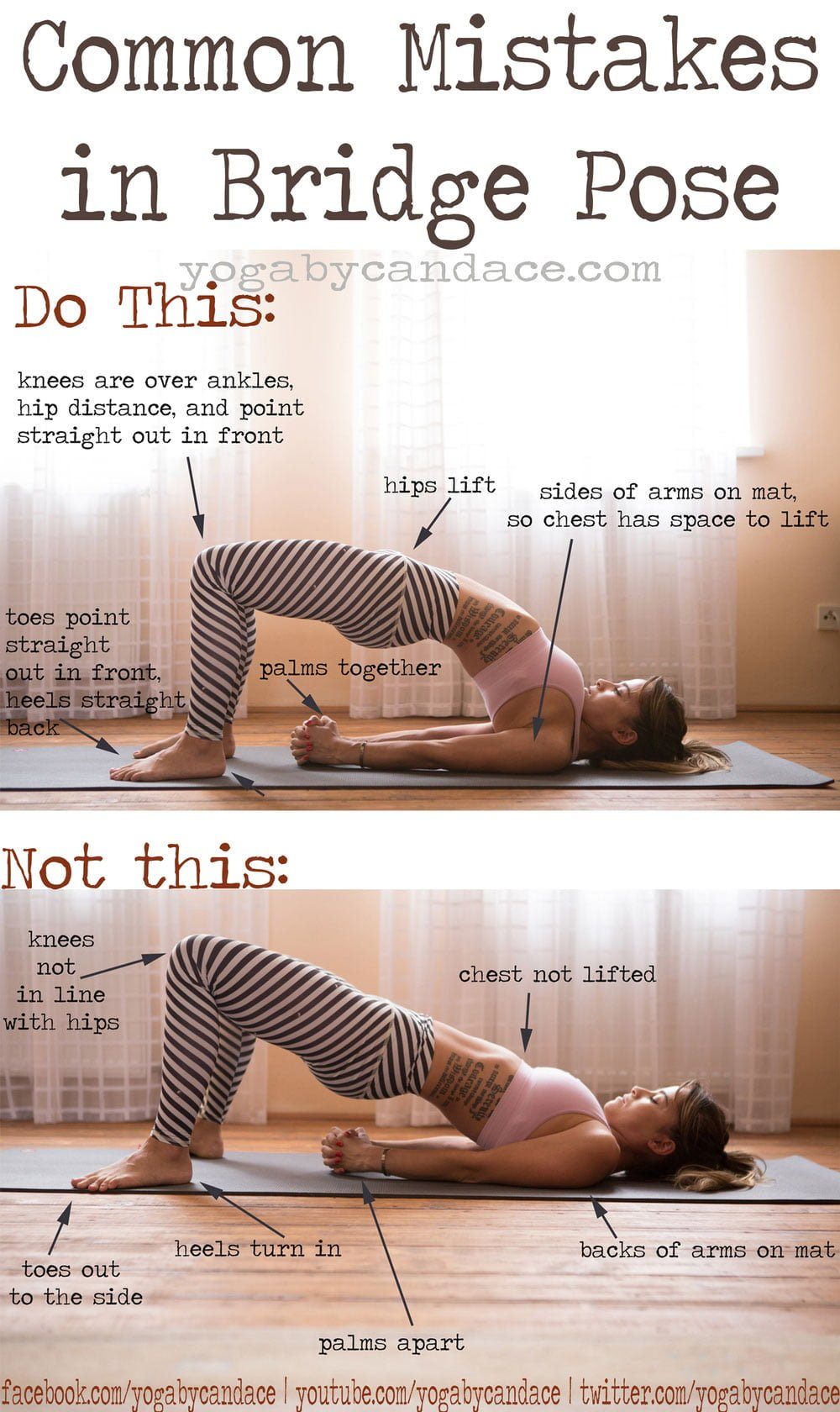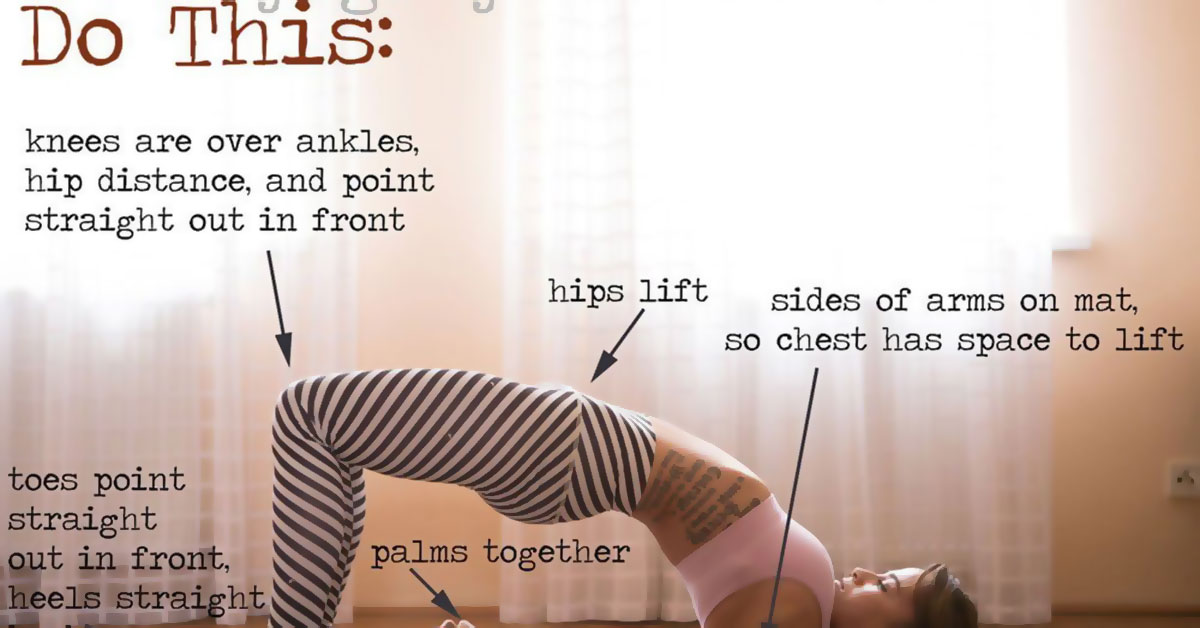Setu Bandha Sarvangasana, the Sanskrit name for the bridge pose, translates as “forming a bridge.” When holding the bridge pose, focus on forming a strong bridge. The benefits of bridge pose include increasing flexibility in the back as it stretches and relieves tension in the shoulders and neck. The leg muscles and gluteals are also strengthened and the chest opened.
How to do the bridge pose:
Step 1: With the knees bent, lie on the back. Keep the feet parallel and hip width apart and heels close to the buttocks. Keep the arms by the sides, with the palms facing downwards.
Step 2: Inhale. While exhaling contract the abdominals and lift the pelvis toward the roof, pushing both feet evenly into the ground, continuing to breathe deeply.
Step 3: While inhaling slowly lift the lower, middle, as well as upper back if possible. Lift only as far as feels comfortable. The weight is distributed between the feet and shoulders. Keep the knees hip distance apart and feel the big toes pressing into the ground. Keep the pose while breathing deeply.
Step 4: Moving the shoulder blades together, keep the fingers interlaced underneath the lifted buttocks. If that’s too difficult, hold the ankles or make use of the hands to help support the hips and buttocks.
Step 5: With each breath exhaled, try and lift the pelvis a bit higher until the pose feels complete.
Step 6: While exhaling, release by lowering the spine onto the ground one vertebra at a time.
Benefits of Bridge Pose:
Strengthens the hamstrings, buttocks and back
Stretches the hips, spine, neck and chest
Helps to alleviate mild depression
Helps to alleviate stress and reduce anxiety and insomnia
Reduces headache and backache
Stimulates the thyroid
Stimulates digestion and the abdominal organs
Improves blood circulation
Helps to relieve menopause symptoms

Image Source – yogabycandace



